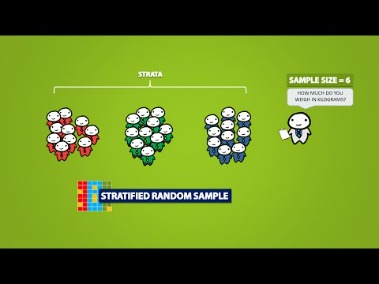Content

Our COGS and Inventory under the perpetual method are determined by the journal entries already made. This method, known as the periodic inventory system, is not as prominent as it once was due to technological advances in accounting software. Read on to learn about periodic inventory and its younger brother, the perpetual inventory system. Summarizes the differences between the perpetual and periodic inventory systems. A sales allowance and sales discount follow the same recording formats for either perpetual or periodic inventory systems.
- For instance, if there are multiple warehouses for storing stock you can adjust the stock with other warehouses.
- Perpetual inventory keeps accounts of inventory records with the help of a computerized system or inventory management software.
- If inventory is a key component of your business, and you need to manage it daily or weekly to make new orders and keep up with demand, use perpetual inventory accounting.
- Utility management keeps track of asset performance and enables you to monitor & analyze performance to minimize consumption.
- The time commitment to train and retrain staff to update inventory is considerable.
In a perpetual inventory system, the maintenance of a separate subsidiary ledger showing data about the individual items on hand is essential. On February 28, 2009, Best Buy reported inventory totaling $4.753 billion. However, the company also needs specific information as to the quantity, type, and location of all televisions, cameras, computers, and the like that make up this sum. That is the significance of a perpetual system; it provides the ability to keep track of the various types of merchandise.
Periodic Inventory vs. Perpetual Inventory: An Overview
When physically entering or leaving an inventory we enter data on a perpetual system and the system shows the inventory status. Here, we don’t count physical inventory every day rather we physically count inventories and match it with the system when making an audit which is called inventory reconciliation.

Updates and records the inventory account at certain, scheduled times at the end of an operating cycle. The update and recognition could occur at the end of the month, quarter, and year. There is a gap between the sale or purchase of inventory and when the inventory activity is recognized. The perpetual system may be better suited for businesses that have larger, more complex levels of inventory and those with higher sales volumes.
Free Financial Statements Cheat Sheet
Multiple Adjustments– During the The Difference Between The Periodic And Perpetual Inventory Systems -taking periods, you have no features to calculate the outdated products and losses. As a result, there will be expensive adjustments after taking the physical inventory count. Asset management software provides great advantages to the organizations such as accurate tracking, inventory manangement system, and these reports help identify the pattern of sales. Furthermore, with the help of data you can track trends as well that may help in growing sales and it can also assist in planning future goals.
Not to forget, updating the https://intuit-payroll.org/ will be expensive, and you will need to train the employees, which is nothing but an additional expense. For this reason, a small-scale business might not be able to afford it.
What Are the Advantages of a Perpetual Inventory System?
Under perpetual system, inventory record is updated on run-time basis i.e. regularly after every transaction. Under a perpetual inventory system, inventory accounts and databases are updated automatically each time a product is received or sold. Perpetual inventory systems rely on information technology to instantly track inventory movement and send electronic updates across any distance to central databases. You have decided to open up a small convenience store in your hometown. As part of the initial set-up process, you need to determine whether to use a perpetual inventory system or a periodic inventory system. Write an evaluation paper comparing the perpetual and periodic inventory systems. Describe the benefits and challenges of each system as it relates to your industry and to your business size.
- In the perpetual inventory method, you should know the purchase price, selling price, and all the accounts affected.
- Fifo method should be used when the company is trying to show its immense potential of earning huge profits.
- Plex Systems, Inc., a Rockwell Automation company, is the leader in cloud-delivered smart manufacturing solutions, empowering the world’s manufacturers to make awesome products.
Because transactions are automated and detailed to the unit level in perpetual systems, errors can quickly be uncovered and improvement methods swiftly implemented. When using a periodic system, a single entry is for the sale amount and the goods reflecting that. But when it comes to a perpetual system, two entries will be recorded.
What Is The Periodic Inventory System?
In periodic inventory, the COGS account entry is done as a lump sum adjustment and isn’t created until inventory is counted. The distinction means that companies needing a regular or daily COGS will use perpetual accounting. Some companies may use cycle counting as a stop-gap between periods to “true-up” the counts, but it’s still less accurate than perpetual. The last difference between perpetual and periodic inventory system is about stock turnover rates. The financial indicators play a significant role when determining the success of a product. However, the periodic system doesn’t provide a clear idea of how to calculate stock turnover rates. However, a perpetual system will be able to provide you with an accurate view of stock data at all times.
What is the difference between periodic and perpetual inventory?
Businesses using periodic inventory update their inventory records on a regular schedule, often monthly, quarterly, or annually. Perpetual inventory requires regular updates but offers more in-depth and timelier inventory information.
It is actually a software system that can support taking the count of inventory at specific periods. The company can import the numbers within the software, opt for a physical product review, and import the remaining data for reconciliation purposes. In periodic inventory physical count is done to measure the inventory level whereas perpetual inventory is updated continuously. The periodic inventory system is not the same as the physical inventory system. The word ‘physical inventory’ comes from because the data of an inventory system and physically counted inventory may not the same for many reasons including administrative errors, shoplifting, and damage.
Inventory being an essential asset to the companies, perpetual inventory system also enables the accounting teams to create more accurate tax and regulatory reports. Under perpetual inventory system, transactions are recorded directly in inventory account and no separate or temporary accounts like purchases and purchases returns are maintained. Every purchase, purchase return, sale or sales return is recorded in inventory account as and when transaction takes place. Perpetual inventory systems, for example, can increase accounting efficiency but they incur a large upfront expense. Periodic inventory systems, while less costly to implement, can be less precise and reliable than perpetual systems. Periodic and perpetual both are inventory management systems with a view to managing inventory data. In a periodic system inventory data updates after a specific period and in a perpetual system data updates after every inventory movement including purchases, sales, transfers, etc.
This is why many companies perform a physical count only once a quarter or even once a year. For companies under a periodic system, this means that the inventory account and cost of goods sold figures are not necessarily very fresh or accurate. Another difference between perpetual and periodic inventory system is the purchases. When you take a look at a periodic system, a single entry is fed into the purchase account and the total purchase amount. On the other hand, the perpetual systems will record the total amount of stock purchased, along with the recording of the total number of units that have been purchased. The above article has put in front of you a detailed explanation of both perpetual and periodic inventory methods.
